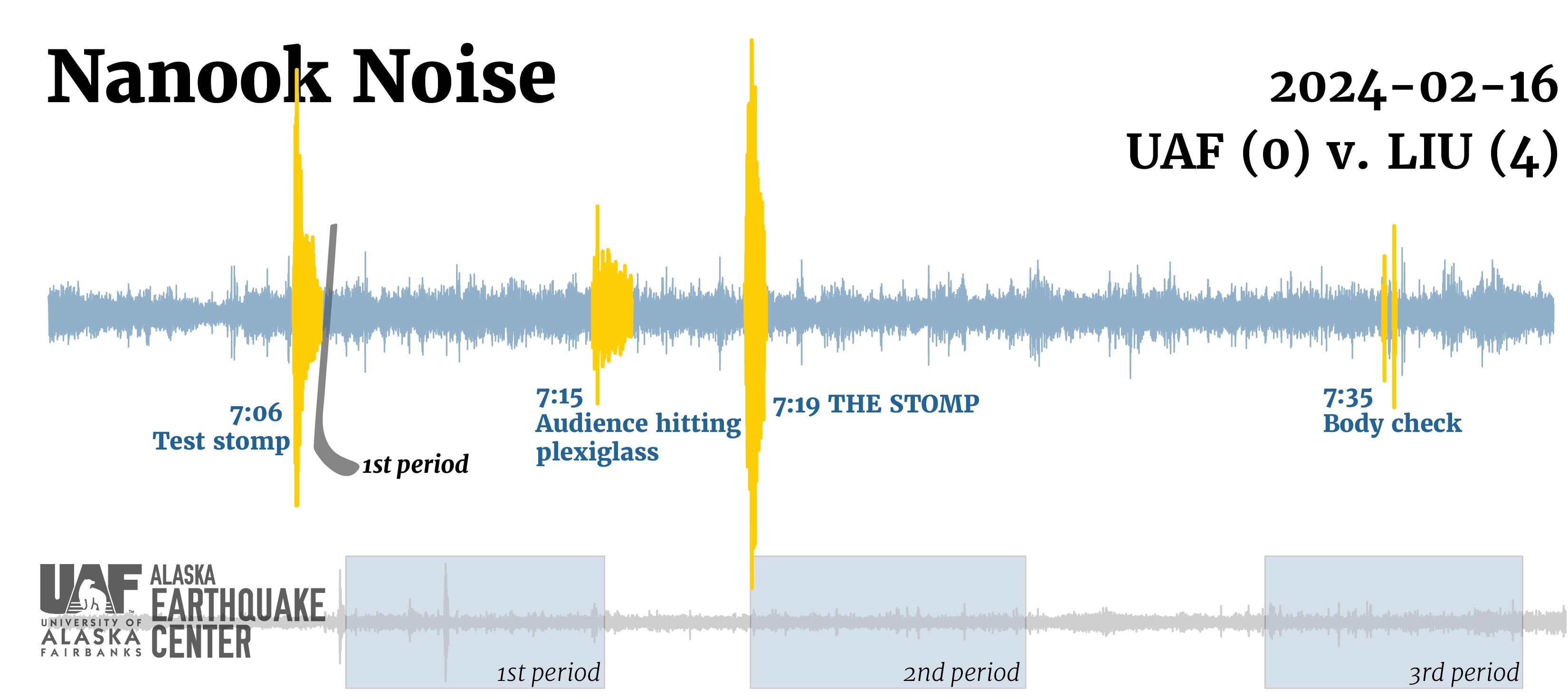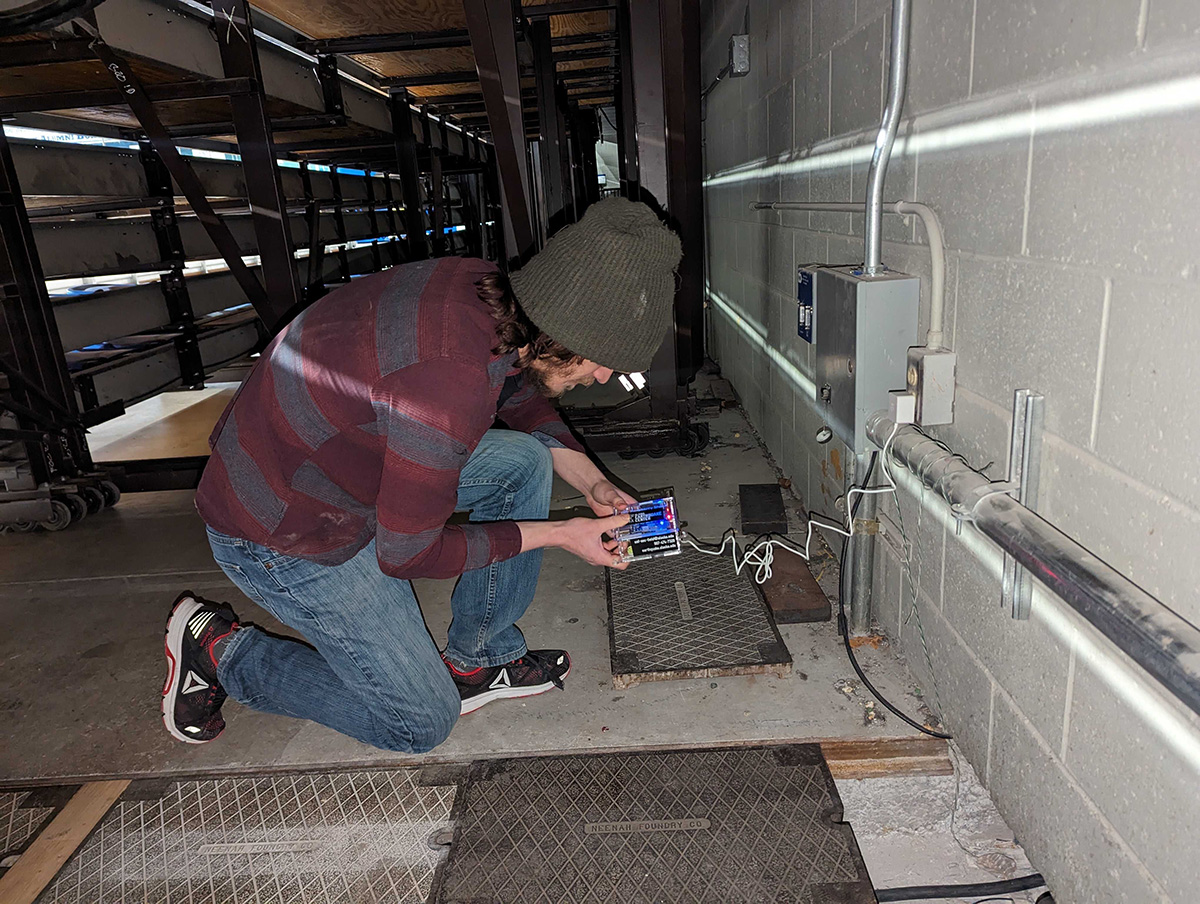


“Let’s make some NOOOOOOISE!” the announcer called to the crowd. The Alaska Earthquake Center was one of the stars of Friday’s “Research at the Rink” Nanook Hockey game at the Carlson Center, for the first demonstration in Alaska that seismometers can register the activity of a stadium full of fans. Prominent signals came from stomping, bleacher-shaking, and body checks.
During the game, which pitted the UAF Nanooks against the Long Island University Sharks, signals streamed in from the crowd’s reactions, and some of the action on the ice (see Figure 1). At the first media time-out, the announcer urged fans to jump, stomp, and make noise so they could watch their seismic activity being generated in real time on the Jumbotron. This signal was the highest one made during the night’s activities, which included other features of the UAF Vice Chancellor for Research’s third annual Research at the Rink event.
“A few of us at the Alaska Earthquake Center have had the idea for a while now, that it would be exciting to put a seismometer at a local Fairbanks sporting event to measure how much the building is shaking while everyone cheers and stomps,” says Field Engineer Joanna Heslop, who led the efforts to deploy the instruments.
This vision sparked a frenzy of activity to make it happen—in just a couple of weeks, scientists with Alaska Earthquake Center’s Systems and Field teams installed three seismometers around the Carlson Center and hooked them up to a live display on the Center’s Jumbotron (Figure 2). Web developer Nicholas Alexeev describes one of the biggest challenges as “working around a deadline” with non-standard equipment.
Typically, the Alaska Earthquake Center deploys strong-motion sensors in urban centers to detect the ground accelerations during earthquakes that may cause infrastructure damage. These instruments show how shaking varies between different areas, which helps engineers design buildings, roads, utilities, and other infrastructure to withstand the specific type of rattling they will experience. For Friday’s event, we chose expediency and connected education-grade seismometers to display on the live feed.
The shaking is not unlike what could be generated by a small, nearby earthquake or by a more distant larger quake. What matters is not the magnitude of the quake where it occurred, but rather the amount of shaking where you are when you feel it—a quantity we refer to as the intensity of shaking. “In the future, if we make a permanent installation, it would be a strong-motion sensor,” says Alexeev. We plan to do so when the Carlson Center finishes renovations, and then we can report shaking quantitatively on the intensity scale.
Before Friday's event, the crew tested the setup and found that the instruments were sensitive enough to pick up just one person walking some distance away. The instruments even registered a magnitude 4.7 earthquake that occurred on February 14 under Denali, 155 miles away and 70 miles deep (Figure 3).
“One of the challenges was getting the data stream to run fast enough to show up in a real-time display,” says Alexeev.
The seismometers also picked up smaller events during the game, such as audience members pounding on the plexiglas, and one hard body check into the boards (ouch!). If you look closely, you can see two spikes from the body check event, probably where each player hit the wall.
Matthew Mohler, Director of Operations, saw the project as an opportunity to make science come alive, to show people, “we can jump around in a building, and that’s science.” We hope that Nanook Noise will become a regular feature of Nanook game programming in the future.
Check out more of the action on our Instagram page, @akearthquake.


